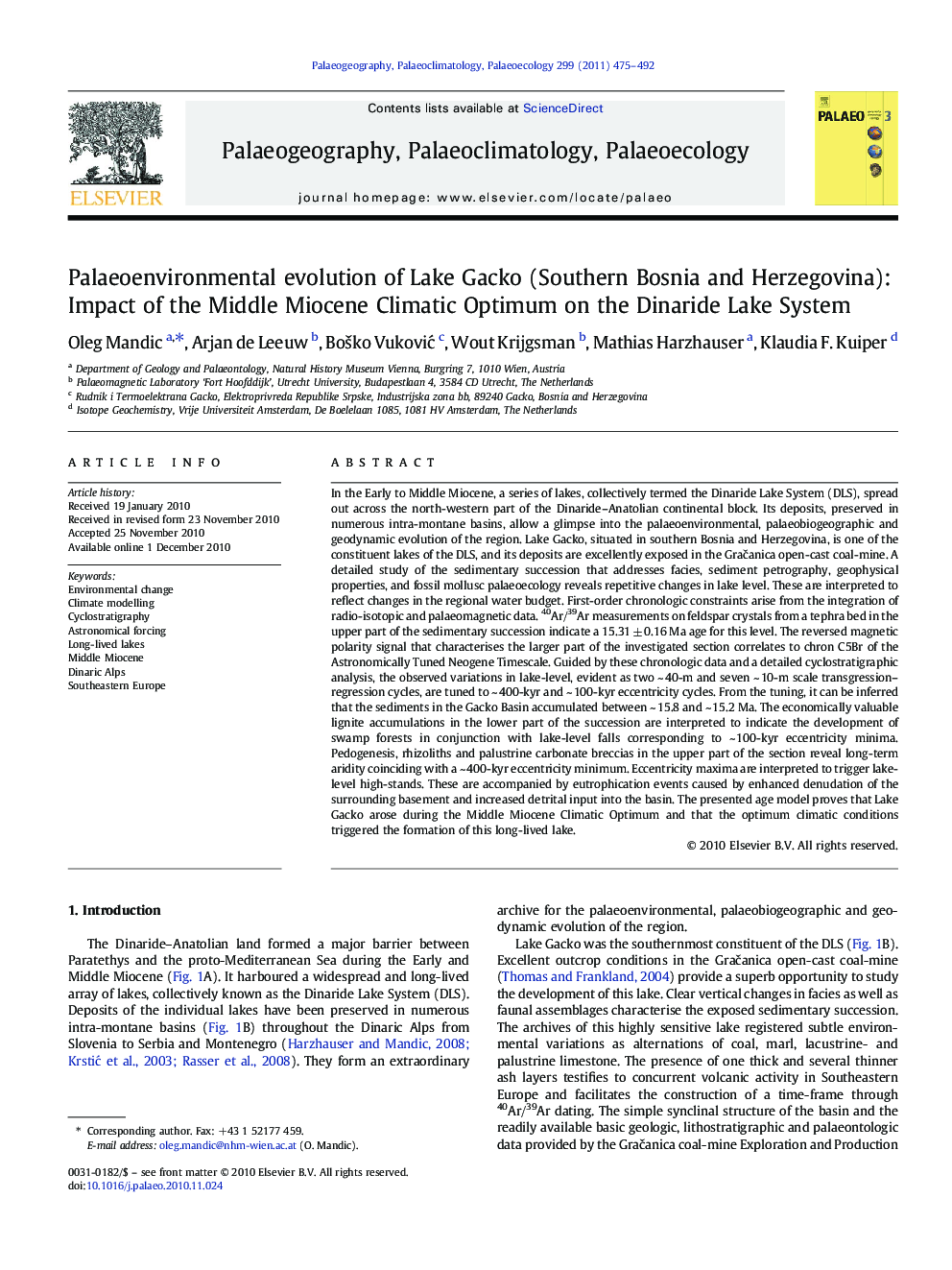| Article ID | Journal | Published Year | Pages | File Type |
|---|---|---|---|---|
| 6350729 | Palaeogeography, Palaeoclimatology, Palaeoecology | 2011 | 18 Pages |
Abstract
In the Early to Middle Miocene, a series of lakes, collectively termed the Dinaride Lake System (DLS), spread out across the north-western part of the Dinaride-Anatolian continental block. Its deposits, preserved in numerous intra-montane basins, allow a glimpse into the palaeoenvironmental, palaeobiogeographic and geodynamic evolution of the region. Lake Gacko, situated in southern Bosnia and Herzegovina, is one of the constituent lakes of the DLS, and its deposits are excellently exposed in the GraÄanica open-cast coal-mine. A detailed study of the sedimentary succession that addresses facies, sediment petrography, geophysical properties, and fossil mollusc palaeoecology reveals repetitive changes in lake level. These are interpreted to reflect changes in the regional water budget. First-order chronologic constraints arise from the integration of radio-isotopic and palaeomagnetic data. 40Ar/39Ar measurements on feldspar crystals from a tephra bed in the upper part of the sedimentary succession indicate a 15.31 ± 0.16 Ma age for this level. The reversed magnetic polarity signal that characterises the larger part of the investigated section correlates to chron C5Br of the Astronomically Tuned Neogene Timescale. Guided by these chronologic data and a detailed cyclostratigraphic analysis, the observed variations in lake-level, evident as two ~ 40-m and seven ~ 10-m scale transgression-regression cycles, are tuned to ~ 400-kyr and ~ 100-kyr eccentricity cycles. From the tuning, it can be inferred that the sediments in the Gacko Basin accumulated between ~ 15.8 and ~ 15.2 Ma. The economically valuable lignite accumulations in the lower part of the succession are interpreted to indicate the development of swamp forests in conjunction with lake-level falls corresponding to ~ 100-kyr eccentricity minima. Pedogenesis, rhizoliths and palustrine carbonate breccias in the upper part of the section reveal long-term aridity coinciding with a ~ 400-kyr eccentricity minimum. Eccentricity maxima are interpreted to trigger lake-level high-stands. These are accompanied by eutrophication events caused by enhanced denudation of the surrounding basement and increased detrital input into the basin. The presented age model proves that Lake Gacko arose during the Middle Miocene Climatic Optimum and that the optimum climatic conditions triggered the formation of this long-lived lake.
Keywords
Related Topics
Physical Sciences and Engineering
Earth and Planetary Sciences
Earth-Surface Processes
Authors
Oleg Mandic, Arjan de Leeuw, BoÅ¡ko VukoviÄ, Wout Krijgsman, Mathias Harzhauser, Klaudia F. Kuiper,
